Voices of Biotech
Podcast: MilliporeSigma says education vital to creating unbreakable chain for sustainability
MilliporeSigma discusses the importance of people, education, and the benefits of embracing discomfort to bolster sustainability efforts.
September 1, 2008
Q&A with the Scientific Advisors
CHARLES SCHMELZER
senior scientist in late-stage purification at Genentech, Inc.
How long have you worked for your current employer, and where did you work before that? What degrees do you hold, and from where? I have been working at Genentech since September 1987. I have a BS degree (chemistry) from Rutgers University (Cook College) and a PhD degree (biochemistry) from North Carolina State University.
UWE GOTTSCHALK
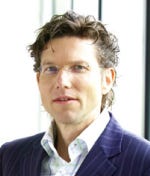
vice president of purification technology at Sartorius Stedim Biotech in Germany
How long have you worked for your current employer, and where did you work before that? 1991–2004 Bayer Health Care, head of GMP purification; 2004–today Sartorius Stedim Biotech, VP purification technologies
What degrees do you hold, and from where? PhD in immunochemistry
When and why did you get involved in the biotechnology industry? What interested you most about it? main interest in downstream processing of monoclonal antibodies
What kinds of titers (e.g., 0.5 g/L, 1 g/L, 5 g/L) are companies’ downstream processes having to deal with these days? Today 1 g/L; in the next five years >5 g/L
What are the most important steps in such processes? The most serious bottleneck is the first capturing step (column chromatography).
What’s the general strategy for addressing the downstream bottleneck — or is there one? Alternatives are coming from emerging (old) technologies such as precipitation, crystallization, membrane chromatogrphy in polishing.
What were your main concerns in helping to put together the Separation/Purification track? Hot topics are alternative unit operations, process integration, a rational combination of reusable and single-use steps (disposables), and cost models to identify the most efficient way throughout process development and manufacturing.
PETER W. WOJCIECHOWSKI
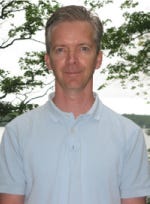
director of process and analytical CMC for Johnson & Johnson Regenerative Therapeutics
How long have you worked for your current employer, and where did you work before that? I have worked for Johnson & Johnson for seven years, beginning in 2001 with the process technology group leading purification process validation efforts for Centocor and the J&J Global Biologics Supply Chain. In 2007, I moved to Johnson & Johnson Regenerative Therapeutics to work on the development of convergent products including biologic–device combinations, advanced biomaterials, and cell therapies. Prior to J&J, I worked for eight years at Hemosol Inc. as manager of manufacturing technology developing and validating processes for the manufacture of a hemoglobin-based blood substitute.
What degrees do you hold, and from where? I have a PhD in chemical engineering from MacMaster University for a thesis project based on biomedical materials research related to blood-surface interactions.
When and why did you get involved in the biotechnology industry? What interested you most about it? I was drawn to the biotechnology industry for the opportunity to collaborate with and learn from the many different disciplines involved and to bring helpful therapeutics to the market.
What’s the general strategy for addressing the downstream bottleneck — or is there one? The greatest current challenges seem to be related to a full understanding of regulatory expectations for process validation and CMC submissions. There is also an overall concern about reducing the cost of developing and manufacturing new biopharmaceuticals.
Who will be most interested in the subject matter of your track at the BPI Conference & Exhibition? What do you expect them to “take away” with them? And what were your main concerns in helping to put together the Separation/Purification track? Overall the presentations all look like good ones that address the primary questions regarding regulatory expectations and the cost of developing and manufacturing biopharmaceuticals. Good science is the mechanism by which the conflicts between business and compliance can be reconciled. I hope that the audience will find ideas that they can adapt to their own projects in order to reduce the cost of drug development and increase the probability of meeting regulatory expectations.
DAVID W. KAHN
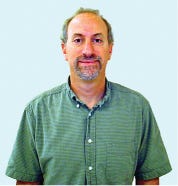
director of latestage purification development at Human Genome Sciences, Inc.
How long have you worked for your current employer, and where did you work before that? What degrees do you hold, and from where? When and why did you get involved in the biotechnology industry? What interested you most about it? I’ve been at Human Genome Sciences since 2003. Prior to that, I worked in downstream process development at Genentech for 10 years. I have a PhD in biochemistry from Virginia Tech. My first involvement in biotech was my job with Genentech. The attraction of the biotech industry is to apply creative thinking and good science to try and tackle unmet medical needs.
What kinds of titers (e.g., 0.5 g/L, 1 g/L, 5 g/L) are your company’s downstream processes having to deal with these days? What’s the general strategy for addressing the downstream bottleneck — or is there one? Our titers are in currently in the 1-3 g/L range. We haven’t really been affected yet by the downstream bottleneck but are working on ways to possibly avoid it in future processes.
Who will be most interested in the subject matter of your track at the BPI Conference & Exhibition? I think the information covered in our sessions will be of significant interest to individuals in downstream process development and operations, engineering, and manufacturing sciences.
What do you expect them to “take away” with them? I expect attendees will take away a broader understanding of some of the more pressing issues in the industry.
Which presentations/sessions at the conference are you most looking forward to attending? I think we have a great program and am looking forward to many of the talks at the meeting.
SCIENTIFIC ADVISORS
Edward Cole, senior vice president of protein development at Genzyme Corporation
Chris Dowd, senior engineer in late-stage purification at Genentech, Inc.
Adam Goldstein, senior manager of Oceanside clinical operations for Genentech, Inc.
Uwe Gottschalk, vice president of purification technology at Sartorius Stedim Biotech
Brian R. Hubbard, scientific executive director of process and analytical sciences for Amgen Inc.
David W. Kahn, director of late-stage purification development at Human Genome Sciences, Inc.
Charles Schmelzer, senior scientist in late-stage purification at Genentech, Inc.
Peter W. Wojciechowski, director of process and analytical CMC at Johnson & Johnson Regenerative Therapeutics
Paul Wu, manager of protein isolation at Bayer Healthcare
Product Recovery and Purification
from Our Archives at www.bioprocessintl.com
Arakawa T, et al. Aggregation Analysis of Therapeutic Proteins, Part 1: General Aspects and Techniques for Assessment. BioProcess International 4(10) 2006: 32–42.
Bergmann K, Rosenblatt B. Design and Performance of Viral Clearance Studies. BioProcess International 4(10) 2006: 56–62.
Blanchard MM. Quantifying Sterilizing Membrane Retention Performance. BioProcess International 5(5) 2007: 44–51.
Crawford M, Stevens J, Roenneburg L. Optimizing Sample Load Capacity and Separation Through a Series of Short Prep Columns. BioProcess International 5(1): 40–46.
Dosmar M. An Experimental Approach to Optimization of Ultrafiltration. BioProcess International 4(10) 2006: 44–54.
Gavin D, Gagnon P. Building Process Control into Chromatographic Purification of Viruses, Parts 1 and 2. BioProcess International 4(10,11) 2006: 22-30, 28–34.
Genest P, et al. An Improved Method for Virus Filter Qualification and Implementation: Using Flow Decay to Determine Processing Endpoint. BioProcess International 4(11) 2006: 44–47.
Grönberg A, et al. A Strategy for Developing a MAb Purification Platform. BioProcess International 5(1) 2007: 48–54.
Langer ES. Downstream Production Challenges in 2007: Study Indicates Problems May Not Be Resolved Before 2011. BioProcess International 5(6) 2007: 22–28.
Lim JAC, et al. Economic Benefits of Single-Use Membrane Chromatography in Polishing: A Cost of Goods Model. BioProcess International 5(2) 2007: 60–64.
Meyeroltmanns F, Grabosch M. Downstream Ultrafiltration for Human Serum Albumin: Purification By Crossflow Concentration of Human Serum Albumin with Ultrafiltration Membranes. BioProcess International 5(3) 2007: 56–59.
Ng PK, McLaughlin V. Regeneration Studies of Anion-Exchange Chromatography Resins. BioProcess International 5(5) 2007: 52–56.
Noel R, Hansen MB, Lihme A. Industrial Processing of Immunoglobulins: Applicability for Monoclonal Antibody Manufacturing. BioProcess International 5(5) 2007: 58–61.
Peters S. A Simple Method for Evaluating Filtration Membranes: Establishing a Correlation Between the Apparent Filtration Area and the Effective Filtration Area. BioProcess International 5(3) 2007: 50–55.
Shalliker RA, et al. How Viscous Fingering Can Spoil Your Separation: And You May Not Even Suspect It. BioProcess International 5(1) 2007: 32–37.
Sellick I. Chromatography Advisor #6: Mixed-Mode Sorbents. BioProcess International 4(10) 2006: 66–68.
Q&A with the Speakers
JUDY K. GLYNN
senior principal scientist in global biologics at Pfizer Inc.
“Development of a Precipitation Alternative and Improvements for Protein A for Impurity Reduction in Clarified Broth Containing a Monoclonal Antibody,” 8:15 am Thursday 25 September 2008: Improvements in titer have resulted in a potential bottleneck in downstream purification, which may be addressed by reduction in the number of chromatography steps or optimization of the existing unit operations. This presentation will discuss the evaluation of potential precipitants to reduce the level of impurities in clarified broth prior to capture chromatography, as well as various strategies and wash solutions on the initial Protein A step to maximize its efficiency.
Who will be most interested in the subject matter of your presentation at the BPI Conference & Exhibition? I believe those who work in purification development, and those individuals involved in technology transfer and manufacturing will be most interested.
What do you expect them to “take away” with them? I hope they take away the fact that there are alternatives to established and proven methods for antibody purification.
And which other presentations/sessions are you most looking forward to attending? I am really looking forward to hearing other presentations on disposable technology.
Is Protein A on its way out? Is its importance to downstream processing decreasing, increasing, or staying the same? I believe that the significant increases we have seen recently in reactor titers means we need to be creative in our use of Protein A resin. Because of its fantastic selectivity, it is not on the way out, but we need to develop technology to increase its capacity and lifetime and thus decrease our cost of goods. For true platform processes, it is almost unbeatable for quickly getting products through proof of concept.
Precipitation hasn’t seen a lot of use in bioprocessing so far — why is that? I believe that precipitation is one alternative, either to Protein A or as a way to enhance its effectiveness, but that it hasn’t come of age for antibodies yet due to the approach the industry has used, namely attempting to precipitate out the antibody product. Our approach was to precipitate out the impurities instead of the antibody, which lends itself to the current platform approach more readily.
How long have you worked in biotech? I have worked in biotechnology for 18 years, since 1990.
What degrees do you hold, and from where? I hold a BS degree in biology from the University of Missouri (St. Louis) and an MA degree in biology from Washington University in St. Louis.
When and why did you get involved in the biotechnology industry? What interested you the most about this work? I became involved in biotechnology strictly by accident. I originally trained as a marine biologist but couldn’t get over being seasick, so I ended up working for a biotech company. I really enjoy it because I feel that I’m advancing the health of my fellow humans.
This year’s BPI Conference is happening in Anaheim, CA, home to the original Disneyland. Have you ever been there before? I have never been to Anaheim before, and I’m really looking forward to it. My daughter cannot wait to meet the Disney princesses.
JOE ZHOU
scientific director of process development at Amgen Inc.
“Effective Incorporation of Disposables into MAb Drug Substance Production,” 4:00 pm Friday 26 September 2008: In this presentation, the incorporation or implementation of three disposable systems such as depth filtration, membrane chromatography, and nanometer filtration technology in first-in-human and commercial processes will be introduced. Integration of disposable systems into an existing process will be examined and an excellent data set of impurity removal and viral clearance will be presented. Advantages and disadvantages including cost analysis, validation and facility usage will be discussed. Possible future disposable systems such as mix mode membranes and monoliths in 2-column downstream purification will be further discussed.
Who will be most interested in the subject matter of your presentation at the BPI Conference & Exhibition? Downstream process developers will be most interested in the subject matter of my presentation.
What do you expect them to “take away” with them? The take-home message for them is that one of the solutions to overcoming the bottleneck of downstream process for future 10g/L cell culture titers is to make full use of disposable systems.
What degrees do you hold, and from where? From his official bio: “Dr. Joe Zhou has his PhD degree in biopharmaceutical sciences from Queen’s University of Belfast, UK; MS in enzymology/biochemistry and BS in microbiology from Liaoning University.”
When and why did you get involved in the biotechnology industry? What interested you the most about this work? What interested me most about this work is addressing in downstream processes the so-called bottleneck for future 10 g/L cell culture titers. One solution is the full use of disposable systems.
AMANDA LEWIS
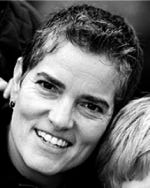
senior associate scientist in purification process development at Amgen Inc.
“Isolation and Characterization of DNA from Cell Culture Bioreactors for Evaluation of Clearance Through a Purification Process,” 8:45 AM Friday 26 September 2008: We have evaluated the nature of DNA found in harvest filtrate from cell culture processes and prepared representative DNA pools for challenge studies. In particular, we examine the effects of apoptotic CHO cell cultures and the clearance of fragmented DNA through purification. Changes in the DNA population for a monoclonal antibody during the course of target protein production will be described.
Who will be most interested in the subject matter of your presentation at the BPI Conference & Exhibition? What do you expect them to “take away” with them? I think the subject matter is of interest to anyone who has worked with a mammalian cell culture process. This work provides a deeper understanding for impurity clearance in a purification process and also provides a new prospective on how we approach understanding the capabilities of our processes.
What analytical methods (equipment and products) were used in your study? Qiagen DNA extraction kits and Ultrapure 500 resin; Invitrogen E-Clone agarose gels; Invitrogen Picogreen dsDNA kit; Guava flow cytometer.
How long have you worked in biotech? What degrees do you hold, and from where? When and why did you get involved in the biotechnology industry? What interested you the most about this work? I have worked in biotech for 11 years and have a BS degree in chemistry from The Evergreen State College in Olympia, WA. My first job in biotech was shortly after I graduated at Bayer Pharmaceuticals in their pilot plant. I found the work fascinating. The scale of the process is what amazed me most; to see experiments I had carried out at the bench be successful at such a large scale.
GISELA M. FERREIRA
senior process engineer in purification process development at Medarex Inc.
“Development and Scale-Up of Q Membrane Chromatography in Nonaffinity Purification Processes of HuMAbs,” 2:15 PM Friday 26 September 2008: Disposable membrane chromatography has been successful in replacing resin flow-through chromatography and provides an efficient viral removal strategy for nonaffinity purification processes of HuMAbs. Scalability of membrane application has been tested up to 35-L and 200-L bioreactors to process harvests for different molecules. Loading capabilities on this singleuse chromatography were increased up to 10 g/L to positively impact process economics without compromising viral clearance capability. HuMAbs case studies will be described.
Who will be most interested in the subject matter of your presentation at the BPI Conference & Exhibition? scientists and engineers from the purification process development, pilot-scale, manufacturing, viral clearance, technology transfer
What do you expect them to “take away” with them? the simplicity and efficiency of Medarex’s purification processes, supported by the emerging use of disposables
And which other presentations/sessions are you most looking forward to attending? Tracks 1, 2, and 4.
From what expression system are HuMAbs sourced? Is it a batch, fed-batch, or perfusion process? Our HuMAbs are originated in CHO cells. We use every mode of production: batch, fed-batch, and perfusion.
How long have you worked in biotech? seven years
What degrees do you hold, and from where? bachelor’s in food engineering from the School of Biotechnology, Catholic University in Oporto, Portugal; PhD in chemical and biochemical engineering from the University of Maryland Baltimore County in Baltimore, MD.
And why did you get involved in the biotechnology industry? I got involved in the biotechnology industry after my PhD graduation. This industry’s momentum, developments, and potential to increase people’s quality of life were very enticing.
What interested you the most about this work? challenges with engineering, control, and scale-up of the purification process
TIM HERRMANN
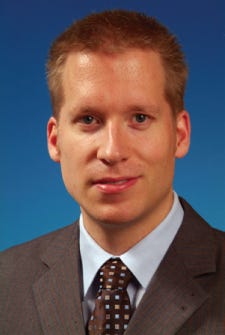
process development scientist in global biological development/purification at Bayer HealthCare LLC
“Platform Development Approaches for Non-Platform Projects: How to Efficiently Develop Purification Processes for Non-Antibody Drugs,” 2:30 PM Thursday 25 September 2008: Platform approaches have become a key element of industrial downstream process development. However, for a versatile product portfolio of nonantibody drugs, a generic, predefined column cascade does not exist. In this talk we describe a comprehensive “platform-like” approach involving automated sorption parameter screening, custom affinity ligand design and scale-up modeling to facilitate lean process development for products which do not fit into a predefined purification platform.
What would be the characteristics of an ideal purification platform? An ideal purification platform in the sense of a cascade of predefined purification steps ready to be plugged into the purification train should be robust in terms of its applicabiltiy to the whole pipeline of upcoming drug candidates. Without requiring more ressources than about one FTE and a timeline of several days to a few weeks, it should be possible to adjust the platform to the current drug candidate while delivering acceptable to good yields with no cutbacks in purity and quality of the product. For different types of proteins a purification platform would be a predefined “catalog” of process development steps on the experimental side as well as on the data analysis and prediction/simulation side. With a higher requirement for resources compared to a cascade of “plug-in” purification steps, the overall amount of resources and especially the development time can still be significantly reduced. The requirements regarding applicability, yield, and product purity/quality are similar to the ones mentioned in the first definition.
Who will be most interested in the subject matter of your presentation at the BPI Conference & Exhibition? The key audience will be scientists working in and managers managing development departments focusing on purification processes. But because this is more a higher level, overview presentation about our comprehensive approach to developing purification processes for nonantibody proteins, it is also valuable for (senior) scientists/managers being involved in other or all areas of process development.
What do you expect them to “take away” with them? The take-home message is that a complete set of tools both on the experimental side as well as on the modeling/simulation side is necessary to establish a platfrom like approach for a diverse product pipeline. Examples for each “tool” will further illustrate the whole approach.
And which other presentations/sessions are you most looking forward to attending? I’m looking forward to attending the presentations about overcoming the direct impact of high titer processes in downstream processing.
How long have you worked in biotech? I’ve been working in the biotech industry for 1.75 years.
What degrees do you hold, and from where? I’m holding a masters degree in chemical engineering from the Technical University of Braunschweig, Germany. I’ve done my doctoral research at the Research Center Juelich, Germany, but I still have to defend the thesis.
PHILIPPE DE VILMORIN
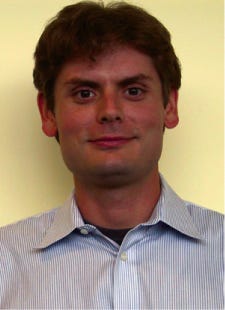
engineer in biopharmaceutical Development, Biogen Idec
“Scale-up Evaluation of Selective Antibody Precipitation and Continuous Recovery with a Disc-Stack Centrifuge,” 8:45 AM Thursday, 25 September 2008: Methods for selective precipitation of monoclonal antibodies with production bioreactor titers >2 g/L have been developed at Biogen Idec as an alternative to chromatography for enhanced throughput and purification of antibodies. To demonstrate the scale-up of this process, antibody was precipitated from 200-L batches of clarified cell culture media and fed to the same continuous disc-stack centrifuge used for cell harvesting. Antibody precipitate was successfully collected with high recoveries in the solids discharge vessel while antibody-free supenatant was sent to waste. In summary, this precipitation technology will be compared with traditional chromatographic capture methods.
Who will be most interested in the subject matter of your presentation at the BPI Conference & Exhibition? Engineers involved in the purification of antibody products are the most directly interested in my presentation.
What do you expect them to “take away” with them? From my presentation, they should take away some new ideas about how their antibody product can be concentrated and purified using equipment that may already be installed in their facility.
And which other presentations/sessions are you most looking forward to attending? Presentations that interest me include Jon Petrone’s presentation regarding UF processing of high-concentration protein solutions because my lab has also been dealing with these issues recently. Also, I have worked extensively with Q membrane chromatography, so I am looking forward to Gisela Ferreira and Joe Zhou’s presentations in the Friday session.
What precipitation conditions/materials are used in your process? The primary agent used for the precipitation of antibodies is polyethylene glycol of various molecular weights. Other additives can be used in addition to PEG to improve the yield of the process or the quality or purity of the precipitate.
Precipitation hasn’t seen a lot of use in bioprocessing so far — why is that? Recombinant proteins are often very fragile molecules, so its not always easy to precipitate them as a solid and then resuspend them without damaging the molecule. And because therapeutic efficacy can be impacted by even small alterations to the molecule, bioprocess designers have been understandably wary of using precipitation as a purification step. However, the antibodies we work with are typically quite durable, allowing us to explore using precipitation in our processes. Also the improvements in cell culture productivity have required us to process much larger amounts of protein, and precipitation is a very cost-effective way to purify the protein while at the same time minimizing the volume needed to contain it.
How long have you worked in biotech? What degrees do you hold, and from where? When and why did you get involved in the biotechnology industry? What interested you the most about this work? I have worked at Biogen Idec for six years after graduating from MIT with a BS degree in chemical engineering. None of my coursework in school was related to biotechnology, but I took a job at Biogen because it’s right across the street from MIT. I was still living on campus, so I went for the short commute. I enjoy being involved in the mass production of recombinant proteins because they are very effective therapeutic agents. I see a very bright future for large-molecule therapeutics in general.
This year’s BPI Conference is happening in Anaheim, CA, home to the original Disneyland. Have you ever been there before? Do you have any recommendations for fun outside the conference, great restaurants to try, etc. that you’d like to share with fellow conference goers? I was born and raised in southern California, so I have been to Anaheim and Disneyland several times. Having lived in Boston for the past 10 years, however, I don’t have any recommendations to share.
JON PETRONE
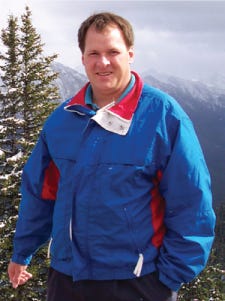
global technical director of the technical support group at Pall Life Sciences
“Challenges of Ultrafiltration Processing with High-Concentration IgG Solutions,” 10:30 AM Thursday 25 September 2008: Ultrafiltration has been extensively used for the concentration and diafiltration of protein solutions. As the target final concentration of biopharmaceutical antibody solutions approaches levels of 15 g/L, challenges can arise associated with system operation and the recovery of viscous product solutions. Processing methods and product recovery strategies are presented.
Who will be most interested in the subject matter of your presentation at the BPI Conference & Exhibition? What do you expect them to “take away” with them? Process development scientists and engineers will be most interested in the talk. As companies are moving to more concentrated MAb products for subcutaneous drug delivery, protein concentrations in the final ultrafiltration step can approach levels >150 g/L and can become substantially more viscous. This talk examines the effect of increasing viscosity on the performance of the UF step and product recovery.
What are the relative viscosities of 1 g/L and 10 g/L proteintiter solutions? What is the viscosity limit for an average ultrafiltration membrane? The kinematic viscosity of IgG solutions in the 1-10 g/L concentration range is typically 1-2 centistokes. As IgG solution concentrations approach 200 g/L in the UF system, the viscosity can reach 20-100 centistokes depending on the temperature and the individual antibody.
How long have you worked in biotech? I have been working in the separations and biotech fields for 25 years.
What degrees do you hold, and from where? I hold a BS and MS in chemical engineering from Worcester Polytechnic Institute in Worcester, MA.
When and why did you get involved in the biotechnology industry? What interested you the most about this work? I initially worked as an applications engineer developing large-scale HPLC and TFF applications. I then worked at Wyeth BioPharma managing a group responsible for the development and clinical/commercial support of membranebased separations and centrifugation applications. I am now a Global Technical Director at Pall managing the technical support for the biopharmaceutical market. I enjoy developing applications and working with customers to solve technical challenges.
MARGIT HOLZER

president of the biopharma business unit at Novasep Process
“Evaluation of the Economic and Regulatory Impact of Sequential Multicolumn Chromatography in Downstream Processing,” 9:15 AM Friday 26 September 2008: Technology principles and process know-how have been successfully extrapolated from continuous purification processes in petrol, food, and small-molecule industries to create powerful new tools for the downstream processing of biopharmaceuticals and help to “debottleneck.” One example is sequential multicolumn chromatography (SMCC), a semicontinuous purification technology that can significantly increase purification productivity and drastically reduce buffer consumption and cost of goods. A detailed explanation of SMCC will be given along with evaluation of its impact on cost of goods and process validation based on a case study.

Who will be most interested in the subject matter of your presentation at the BPI Conference & Exhibition? engineers, management, and production teams
What do you expect them to “take away” with them? the alternative technologies to conventional batch production that allow a significant reduction in the cost of goods for biopharmaceuticals
And which other presentations/sessions are you most looking forward to attending? “Production and Economics” sessions as well as “Recovery and Purification”
Can you briefly describe an SMCC process? SMCC process is a multicolumn process that allows a maximum capacity use of the chromatography media and therefore significantly reduces buffer and clean-in-place solutions. It is a process that can be run in a quasicontinuous way.
Do you think it will someday be possible for perfusion cultures to feed continuous separation/purification processes, doing away with the batch concept entirely? Yes
How long have you worked in biotech? 17 years
What degrees do you hold, and from where? PhD in biotechnology from the University of Applied Life Sciences in Vienna, Austria
When and why did you get involved in the biotechnology industry? What interested you the most about this work? From the beginning over 17 years ago because of my passion for nature and technology.
You May Also Like